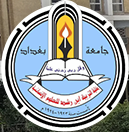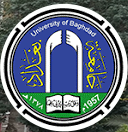Abstract
Al-Taher bin Ashour (d. 1393 AH-1973 AD) is one of the brightest linguistic interpreters in the modern era, as he was interested in explaining the meanings of the Holy Qur’an about its hidden and deep implications, and revealing the subtleties of his knowledge and secrets of his eloquence. He wrote his famous book (Al-Tahrir and Enlightenment) in the interpretation of the Holy Qur’an, in which he applied the linguistic lesson. Ibn Ashour was not satisfied with explaining the verses and explaining the reasons for their revelation. Rather he listed the linguistic aspects with their refutation and discussion.
The importance of the research is evident in two aspects: the first is highlighting the linguistic trend in the interpretation of liberation and enlightenmentand the second is presenting the linguistic views of Al-Tahir bin Ashour on Tahrir and Enlightenment, which indicate his exploration of the sciences of the Arabic language, with an explanation of the opinions of scholars who agree with his opinion and those who oppose it. The study showed the multiplicity of linguistic aspects in these specific verses for the study. The study noticed that the grammatical issues are the most present in these verses, and that the morphological issues are very few and were limited to the verb more and the infinitive. The study found that reasoning is present with Ibn Ashour during his presentation of most linguistic issues. The study revealed that Ibn Ashour disagreed with the scholars in most of the issues he dealt with
Article Type
Article
First Page
359
Last Page
378
Publication Date
12-15-2022
Creative Commons License

This work is licensed under a Creative Commons Attribution 4.0 International License.
Recommended Citation
Hasan, Zainab Jasim
(2022)
"Morphological and Grammatical Issues in the Interpretation of (Liberation and Enlightenment) in Surat Yusuf from Verse (11 to 21),"
Alustath Journal for Human and Social Sciences: Vol. 61:
Iss.
4, Article 21.
DOI: 10.36473/ujhss.v61i4.1957
Available at:
https://alustath.researchcommons.org/journal/vol61/iss4/21










